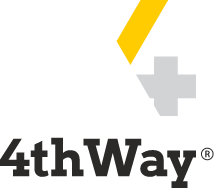To get the best lending results, compare all P2P lending and IFISA providers that have gone through 4thWay’s rigorous assessments.
Why Is It That Property Lending Is Lower Risk Than BTL Or Shares?
Whenever you invest (and money lending is a form of investment), you're taking a risk that you'll lose money. Not just lose to inflation – which is a loss that is practically guaranteed to happen in savings accounts. But I mean an actual loss in terms of getting back a lower amount than you put in.
But investments aren't equal – not in terms of risks.
It can be quite frightening seeing the long list of risks involved in P2P lending. (The 13 Key Peer-To-Peer Lending Risks.) Nevertheless, that requires some context.
In particular, money lending is generally lower risk than owning an asset that produces income or profit. By that I mean owning your own company, buying shares in the stock market, holding a buy-to-let or being a property developer.
What is the evidence for that and why is that true?
To answer that, I'll focus on property lending, since most P2P lending is property and it makes comparison with such things as being a buy-to-let landlord or property developer easier.
1. You're better placed in the “queue”
The main reason is where you are in the queue.
If you are a senior lender, it means that, when a borrower struggles to repay, you get your money back before anyone else. Even if the borrower/property owner owes a dozen banks.
If you are a junior lender, it means some lenders get their money before you. (Some P2P lending providers offer junior lending in return for higher lending rates.)
However, whether you're either a senior or junior lender, you get your money back before the owners. If the borrower is a landlord or a property developer, and the property needs to be forcibly sold to recover debt, all the lenders are repaid – and all the interest due to them is paid – before the borrower/owner is able to get anything themselves.
The entire risk of owning the property was greater than the risk of lending to the owner.
The same applies to the stock market. If you become a part-owner in a business by buying its shares on the stock exchange, and the business collapses, it is the people and companies who lent to the business – the bondholders and banks – who will get their money back first. Shareholders tend to get nothing back.
2. Risks are more easily contained
Owning property or shares means that you lose money even if you're forced to sell after just a price fall of 5%.
However, when you do money lending you can – and usually do – set strict limits on the risk you take. This is set a good distance below the value of the property. You might just lend 60% or 70% of the property's value, giving you a big barrier to protect you that an owner just doesn't get.
To profit with a sensible strategy when being a property owner or part-owner of a business, you typically need to have very long horizons – 10 years or more – to contain the risks. With money lending, you're often looking at just the short-term health of the property or company so that you are not taking long-term risk on what will happen long into the future.
You can lend to many more property owners much more easily than you can be an owner or part-owner in as many properties.
To compare that once again to the stock market too – since lending provides a stable, steady return in the form of interest, it's easier to predict what's going to happen. With the stock market, your returns go up and down dramatically as the market moves.
The evidence
That's all very well in theory, but what about in practice?
In practice, this is clearly supported by the evidence. You can see it in the 4thWay P2P And Direct Lending Index, in that the graph goes up every month – rather than huge losses in some years as you are used to seeing in stock-market graphs.
You can see it in bank lending data. Research from Liberum and data from Trading Economics showed that credit cards and personal loans in the US and the UK made money for banks every single year for 20 years, including through the Great Recession.
Buy-to-let landlords have done incredibly well in the UK. How couldn't they, on average, when the housing shortage has continued to worsen for decades? The last data I saw was from Landbay before it moved its model away from P2P lending a few years ago, which was showing sub 0.3% bad debts in this space.
Even so, that means that landlords on average were losing considerably more, because they were losing all their own equity (the non-mortgaged share of their property) before lenders were losing less than half a percent.
I'm all for being a property owner, owning shares and even having some money in savings accounts – despite inflation! Yet, clearly, money lending has its advantages too.
Further reading
The Inaccuracy Of Property Price Forecasts And What To Do About It.
Pages linked to above
Independent opinion: 4thWay will help you to identify your options and narrow down your choices. We suggest what you could do, but we won't tell you what to do or where to lend; the decision is yours. We are responsible for the accuracy and quality of the information we provide, but not for any decision you make based on it. The material is for general information and education purposes only.
We are not financial, legal or tax advisors, which means that we don't offer advice or recommendations based on your circumstances and goals.
The opinions expressed are those of the author(s) and not held by 4thWay. 4thWay is not regulated by ESMA or the FCA. All the specialists and researchers who conduct research and write articles for 4thWay are subject to 4thWay's Editorial Code of Practice. For more, please see 4thWay's terms and conditions.


